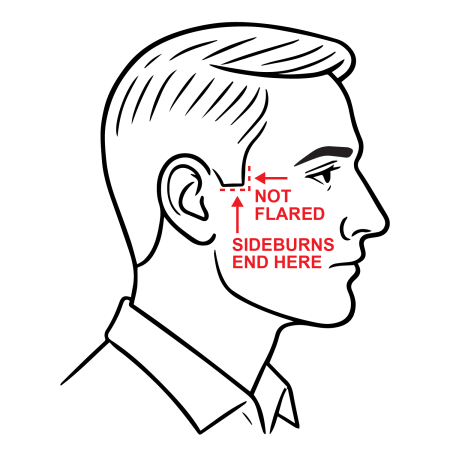The Air Force recently tightened its standards on mustaches and sideburns to comply with Defense Secretary Pete Hegseth’s strict new guidance on facial hair.
Airmen mustaches “must not go beyond the corners of the mouth or into a respirator seal zone,” according to an Oct. 29 memorandum updating portions of the Air Force regulations on dress and personal appearance.

The updated guidance reverses the relaxed mustache standards the Air Force approved in 2022. That policy allowed Airmen to wear slightly longer mustaches that did “not go beyond a horizontal line extending across the corners of the mouth and no more than 1/4-inch beyond a vertical line drawn from the corner of the mouth,” a standard the Air Force initially retained in its July 2025 update to its dress and personal appearance instruction.
The new guidance also takes a slightly stricter stance on sideburns. The service had allowed Airmen to wear sideburns that extended to the “bottom of the orifice of the ear opening,” according to the July 2025 update.
The new policy dictates that sideburns “will be above the ear opening.”

The changes to Air Force personal appearance policy come a month after Hegseth told hundreds of U.S. military leaders he intended to impose stringent new grooming standards across the force.
“We’re going to cut our hair, shave our beards, and adhere to standards,” Hegseth told an audience of generals and senior enlisted leaders. “It’s like the broken windows theory of policing. You let the small stuff go, the big stuff eventually goes. So you have to address the small stuff.”
Hegseth’s speech was accompanied by a Sept. 30 memo directing the services to return to pre-2010 appearance standards that generally do not authorize facial hair waivers.
The new policy forbids beards, goatees, and other facial hair that could interfere with a proper seal on a chemical protective mask or firefighter respirator, the Sept. 30 memo states.
“Uniform grooming standards are not about appearance; they are about survivability, interoperability, and mission execution,” the memo states. “Consistent enforcement ensures personnel can operate protective equipment, meet deployment requirements, and support combat and emergency operations.
For medical conditions, Hegseth directed that all waivers be limited to 12 months and those with permanent conditions be evaluated for separation.
Hegseth also directed that service members with religious accommodations be deemed nondeployable, a status that could essentially end their careers if they go more than a year without deploying.
Service secretaries have until Nov. 30 to submit implementation plans to the Under Secretary of War for Personnel and Readiness, the memo states, referring to the secondary title for the department approved by President Donald Trump.


